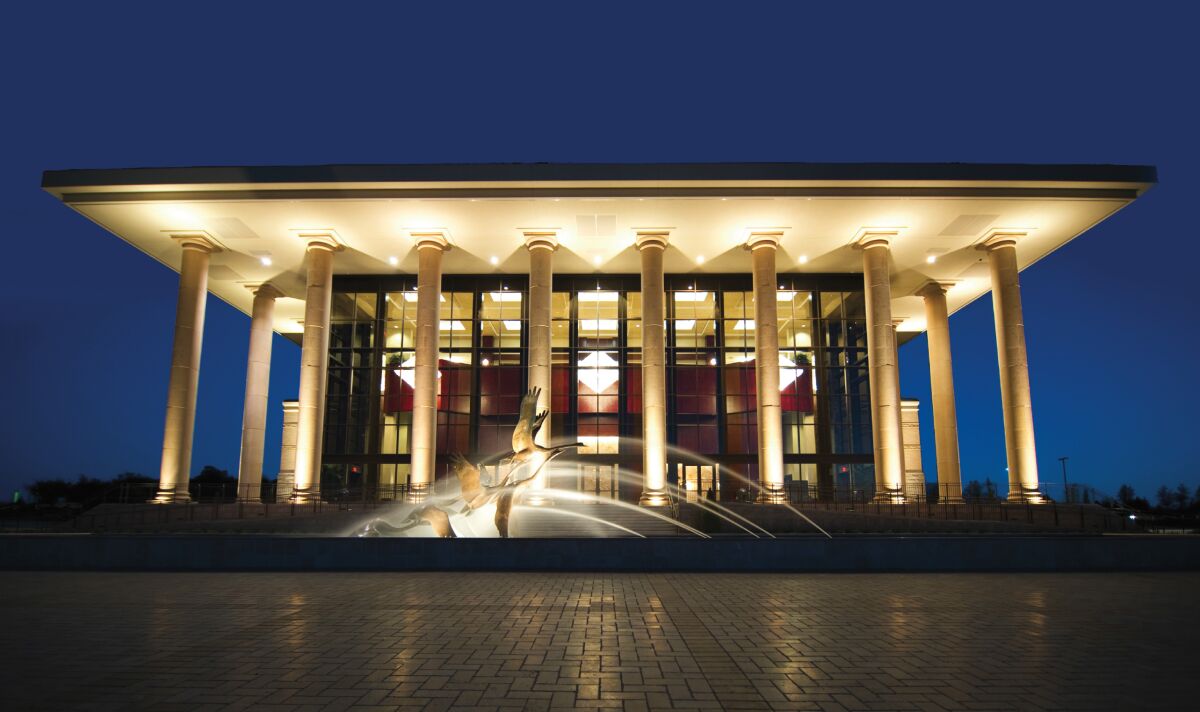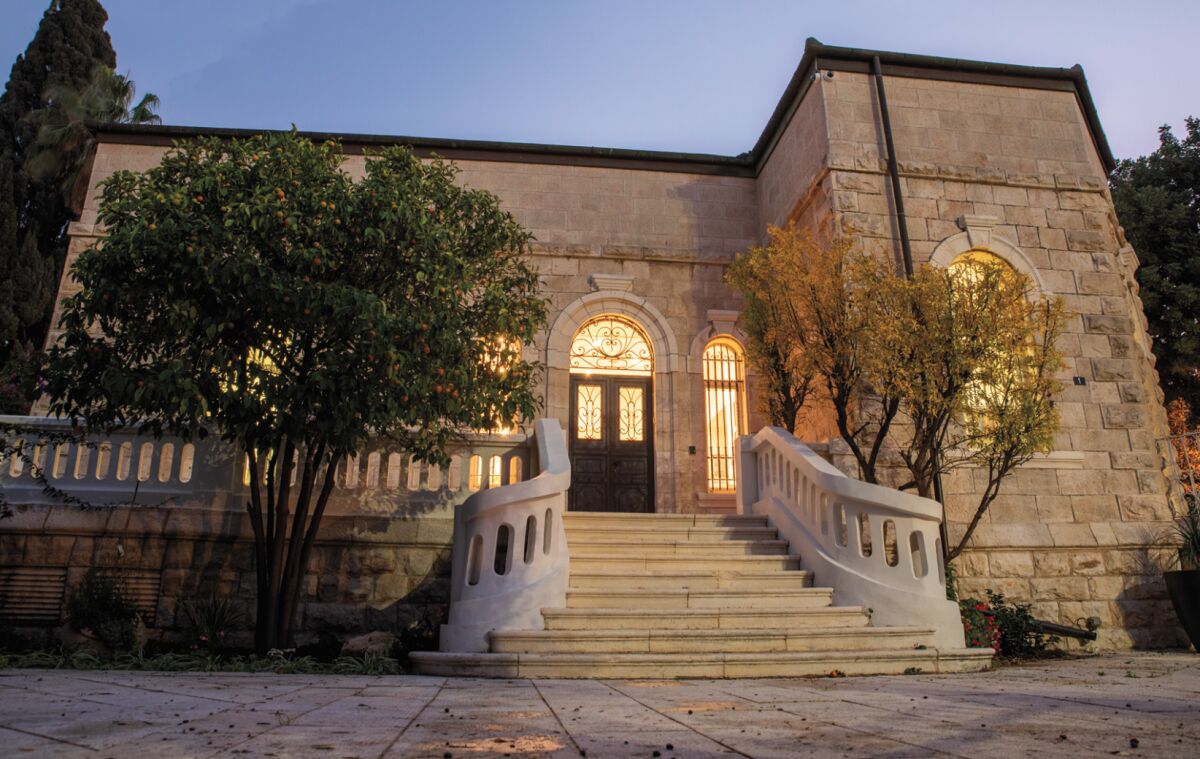We are excited to bring you this special issue of Let the Stones Speak. Our institute and publishing staff worked tirelessly to put together this one-of-a-kind issue. I hope you will find it informative, engaging and inspiring.
Now, more than ever, the world needs the vision and hope contained within Israel’s archaeology and biblical history. Problems are quickly mounting. Increasingly wicked men are committing ever worsening atrocities.
Israel, in particular, faces a deadly dangerous situation. What happened on Oct. 7, 2023, and in the time since has exposed just how much animosity there is for not only the modern Jewish state but also the heritage and history of the Jewish people.
At the Armstrong Institute of Biblical Archaeology, we recognize how intricately connected Jewish heritage is to biblical history and how important it is to emphasize this connection and share it with the people of Israel and mankind.
That gets to the heart of what this issue of Let the Stones Speak and our archaeological exhibit are about: This is a message about the golden era of Israel’s biblical heritage—the kingdom of David and Solomon.
This is Israel’s most precious history!
On Jan. 17, 2023, the Israel Antiquities Authority (iaa) exhibitions department reached out to our office in Jerusalem. They knew we had hosted successful exhibits in the past and asked if we would be interested in hosting another. We were thrilled and honored by the prospect.

For over two years, we hosted the “Seals of Jeremiah’s Captors Discovered” exhibit at Armstrong Auditorium in Edmond, Oklahoma (2012–2015), which showcased the Jehucal and Gedaliah bullae and highlighted the turbulent history of Judah at the time of the Prophet Jeremiah. From 2018 to 2019, we hosted our second exhibit: “Seals of Isaiah and King Hezekiah Discovered.” This world premiere of the bullae of King Hezekiah and Isaiah recounted the inspiring history of Judah during the reign of one of Israel’s greatest kings.
After the iaa contacted us, we sat down to discuss what history we wanted to exhibit next. It had to be unique and inspiring. It had to excel our previous exhibits. It had to be truly monumental.
Only one subject can do this. Having already showcased two of Judah’s greatest prophets and one of Judah’s greatest kings, we decided it was time to explore the pinnacle of Israel’s history. The time had come to showcase the abundant—albeit often overlooked—scientific and historic evidence proving that the kingdom of David and Solomon was monumental and impressive, just as the Bible describes.

It’s hard to believe, but this has never been done before, certainly not like this. No historian or archaeologist, no institution or university, has ever collected all the evidence into one place. No book, website or documentary brings together and presents all the evidence of a 10th-century b.c.e. monumental Israelite kingdom. Part of the reason is that more archaeological evidence has been discovered in the past decade than ever before.
This presents an incredible opportunity for the Armstrong Institute of Biblical Archaeology (aiba). It is also a weighty responsibility.
Our previous exhibits attracted thousands of visitors. The Hezekiah exhibit received Oklahoma Tourism’s 2020 award for Outstanding Temporary Exhibit. However, I believe the “Kingdom of David and Solomon Discovered” is the most important we have ever hosted! This is why we have worked extremely hard to create something truly impressive.
We have brought together some 50 artifacts and around 25 historical- and archaeological-based proofs of the monumental nature of David and Solomon’s kingdom. Some of these artifacts are on display for the first time ever—and some represent the finest and most famous discoveries in the world of biblical archaeology (including the Tel Dan Stele).
Assembling this exhibit wasn’t a simple task, but I believe our nearly 60-year history of involvement with archaeology in Israel has prepared us for this project.
Many of those who worked directly on this magazine and the exhibit—the artists, writers, editors, curators, laborers—have been involved in aiba’s archaeological projects in Jerusalem. I have studied biblical history and ancient Jerusalem since 1961. My education included three years at Ambassador College, a liberal arts institution (now closed) founded by late educator and scholar Herbert W. Armstrong. Mr. Armstrong loved Jerusalem; had a close relationship with several of Israel’s prime ministers, presidents and leading figures; and had a profound understanding and connection with the city, both ancient and modern.
I was at his college in 1968 when Mr. Armstrong and Ambassador College forged, with Hebrew University and the late biblical archaeologist Prof. Benjamin Mazar, what both sides affectionately called an “iron-bridge partnership.” Between 1968 and 1986, these institutions conducted a series of major excavations in both the City of David and on the Ophel, the heart of ancient Jerusalem. Mr. Armstrong further invested tremendous resources in several humanitarian projects across the city.

Since Mr. Armstrong’s death in 1986, I have worked to continue his legacy in Jerusalem. The iron-bridge partnership continues and, together with Hebrew University and the late Dr. Eilat Mazar (Benjamin Mazar’s granddaughter), Herbert W. Armstrong College and aiba have conducted nine more excavations in Jerusalem. We have also worked on several other major Jerusalem-focused projects.
Working alongside Dr. Mazar, Hebrew University, the Israel Antiquities Authority and others, we have uncovered some extraordinary history and artifacts.
In a way, creating the kingdom of David and Solomon exhibit is the crowning achievement of our long history with and enduring love for Jerusalem and biblical archaeology.
We realize there may be some who will take issue with this history, or parts of it. Unfortunately, there is a great deal of contention and disagreement over this period of Israel’s history. Some of this controversy is understandable; after all, these events did unfold 3,000 years ago in a region that has since been repeatedly destroyed and rebuilt. But much of the tension is the result of a strong and pervasive anti-Bible bias. Too often, discoveries that tie into the monumental nature of Israel’s 10th-century b.c.e. kingdom are suppressed, ignored or belittled solely because they relate to the biblical text.
Few today take the approach of Prof. Benjamin Mazar, who said: “Pore over the Bible again and again, for it contains within it descriptions of genuine historical reality.”

One of the fundamental lessons of this exhibit and this special issue of Let the Stones Speak is that the Bible is a legitimate and crucial book of history. We need to understand that without the biblical text, we cannot fully or accurately understand the ancient history of Israel. And without this, we cannot understand modern Israel.
Modern education and science argue that the Bible and archaeology are mutually exclusive. The “Kingdom of David and Solomon Discovered” exhibit dispels this view. Archaeology and the biblical text, as you will see, complement one another magnificently.
We hope you will study, ponder and enjoy this magazine (also now available in Hebrew—email requestIL@armstronginstitute.org for a copy). It contains remarkable information that brings to life one of the most wonderful epochs in Israel’s history. As troubles in the world mount, the history of kings David and Solomon can be a shining beacon of hope.